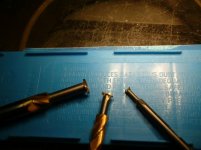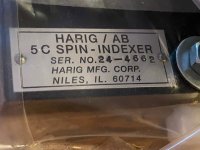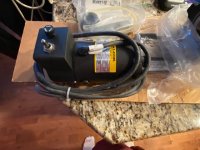kustomizer
Diamond
- Joined
- Aug 17, 2007
- Location
- North Fork Idaho
A week or so back I got a simple email from an old friend, he asked "do you want a spindexer?" I said perhaps, what is it for? He says it clamps things in a 5c collet and spins them so I replied sure, thinking it was something like a speed lathe or something.
Well it showed up yesterday, shiny new in the box with all its stuff, I see them for sale but not much about what to do with it.
Who is using one and what do you use it for?
Well it showed up yesterday, shiny new in the box with all its stuff, I see them for sale but not much about what to do with it.
Who is using one and what do you use it for?









